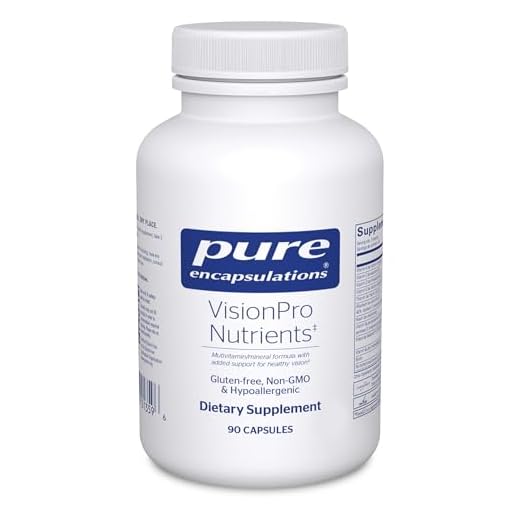







Vitamin A is essential for your night vision because it's critical for producing rhodopsin, the pigment that helps you see in low-light conditions. When you consume vitamin A, it converts to 11-cis-retinal in your retina, enabling rhodopsin formation. Without enough vitamin A, your ability to see in dim light can decline, potentially leading to night blindness. This nutrient also provides antioxidant protection, supporting overall eye health. To maintain peak levels, include foods like liver, fish, and leafy greens in your diet. Discovering the sources and dietary recommendations can further enhance your understanding of this essential vitamin.
Key Takeaways
- Vitamin A is essential for producing rhodopsin, a pigment crucial for low-light vision in rod cells of the retina.
- A deficiency in vitamin A can lead to impaired night vision, with night blindness as an early symptom.
- The conversion of vitamin A to 11-cis-retinal is vital for activating the visual signal pathway in dim lighting.
- Adequate vitamin A intake supports overall eye health by providing antioxidant protection against free radical damage.
- Ensuring sufficient vitamin A levels can prevent severe conditions like xerophthalmia and permanent vision loss related to night blindness.
Role of Vitamin A in Vision
When it comes to your vision, vitamin A plays an essential role, especially in low-light conditions. This nutrient is a precursor to rhodopsin, the photopigment found in rod cells that enables night vision. Without enough vitamin A, your body struggles to regenerate rhodopsin, which can lead to night blindness. Rod cells, which function best in dim lighting, rely heavily on adequate vitamin A to see normally in low-light environments. Additionally, vitamin A also provides powerful antioxidant protection, which helps protect your eyes from free radicals that can cause damage. A deficiency in vitamin A can result in various symptoms, including difficulty seeing at night. If left unaddressed, this deficiency can escalate to more severe issues, such as xerophthalmia and corneal ulcers. The recommended daily allowance (RDA) of vitamin A for adults is 700-900 mcg. Inadequate intake can greatly increase your risk of visual impairment, particularly in low-light situations.
To maintain ideal night vision, it's essential to guarantee you're consuming enough vitamin A through your diet. Foods rich in this nutrient, such as carrots, sweet potatoes, and spinach, can help you meet your RDA and support your eye health. Prioritizing vitamin A is crucial for preserving your ability to see clearly in challenging lighting conditions.
Mechanism of Rhodopsin Production
Rhodopsin production hinges on the essential role of vitamin A in the retina, particularly in the rod cells responsible for low-light vision. Vitamin A, in the form of retinol, is converted into 11-cis-retinal through a process called isomerization. This conversion is important for the formation of rhodopsin, a significant photopigment that allows your eyes to respond effectively to light stimuli. Adequate intake of vitamin A from good food sources of vitamin A is important for maintaining ideal levels in the body.
Once 11-cis-retinal is formed, it binds with scotopsin, resulting in the creation of rhodopsin. When light hits this complex, rhodopsin undergoes a conformational change to metarhodopsin II. This change activates transducin, initiating the visual signal transduction pathway, which ultimately helps you perceive images in low-light conditions.
However, maintaining adequate levels of vitamin A is essential; a deficiency can lead to impaired night vision or night blindness. Without sufficient vitamin A, the production of rhodopsin is compromised, hampering your ability to see in dim lighting. Ensuring you get enough vitamin A in your diet is important for sustaining ideal rhodopsin levels and, consequently, your night vision capabilities.
Recommended Dietary Allowance
Maintaining ideal levels of vitamin A is essential for supporting night vision and the production of rhodopsin. The Recommended Dietary Allowance (RDA) for vitamin A varies based on age and gender. For adults, females require 700 mcg/day, while males need 900 mcg/day to guarantee optimal intake.
Children aged 1-3 years have an RDA of 300 mcg/day, increasing to 400 mcg/day for those aged 4-8 years. As children grow into adolescence, the RDA rises to 600 mcg/day for ages 9-13, and teenagers (14-18 years) should aim for 700 mcg/day for females and 900 mcg/day for males.
It's essential to balance vitamin A intake, as exceeding the upper limit (UL) of 3,000 mcg/day for adults can lead to toxicity. Adequate intake is important not just for overall health, but specifically for maintaining night vision, as vitamin A plays a key role in the formation of rhodopsin, the pigment necessary for low-light vision. By adhering to the recommended guidelines, you can help prevent deficiency and support your eye health effectively.
Symptoms of Vitamin A Deficiency
Experiencing a deficiency in vitamin A can lead to several alarming symptoms, particularly affecting your vision. One of the earliest signs is night blindness, where you have difficulty seeing in low light or darkness. This can be frustrating and may hinder your daily activities. As the deficiency progresses, you might also encounter dryness of the conjunctiva and cornea, resulting in a serious condition known as xerophthalmia. In addition, vitamin A is vital for maintaining healthy skin, as it plays a significant role in cell regeneration and supports overall skin hydration and texture, which can be affected in the absence of adequate vitamin A its significance for skin health. Moreover, you may notice the appearance of Bitot spots—foamy, white patches on the conjunctiva—indicating prolonged vitamin A deficiency. These symptoms not only affect your visual health but can also lead to severe vision problems. If left untreated, a long-term deficiency can result in permanent blindness.
Moreover, recognizing that vitamin A deficiency weakens your immune response is important, making you more susceptible to infections, which can have additional health implications. Addressing these symptoms promptly is necessary to maintain both your vision and overall well-being. If you suspect a deficiency, consider consulting a healthcare professional for guidance on improving your vitamin A intake.
Risks of Vitamin A Deficiency
When vitamin A levels drop too low, the risks can escalate quickly, particularly concerning your vision and overall health. One of the earliest signs of vitamin A deficiency is night blindness, where you struggle to see in dim light. As the deficiency worsens, it can lead to more severe conditions, such as xerophthalmia, which dries out the conjunctiva and can culminate in corneal ulcers and permanent vision loss.
Globally, vitamin A deficiency is a leading cause of blindness, particularly affecting children worldwide. The World Health Organization estimates that this deficiency causes between 250,000 and 500,000 cases of blindness annually. Pregnant women and those with malabsorption disorders are especially vulnerable due to their increased nutritional needs and risk factors associated with low levels of vitamin A.
Moreover, a long-term deficiency can weaken your immune system, making you more susceptible to infections. These infections can further exacerbate vision problems. To protect your vision and overall health, consuming foods that contain adequate vitamin A is essential. Understanding the risks associated with vitamin A deficiency underscores the importance of maintaining proper intake for your well-being.
Sources of Vitamin A
To support your vision and overall health, it's important to know where to find vitamin A. This crucial nutrient comes in two primary forms: preformed vitamin A (retinol) from animal products and provitamin A carotenoids from plant sources.
Animal products like liver, fish, and dairy are rich in retinol. Just a 4-ounce serving of liver can provide up to 5,620 mcg of vitamin A, greatly surpassing the daily recommended intake for adults.
On the flip side, plant sources like carrots, sweet potatoes, and leafy greens offer beta-carotene, which your body converts into vitamin A. For instance, one large carrot contains about 601 mcg of vitamin A, while a cup of raw spinach delivers around 141 mcg. Including these foods in your diet can help guarantee you meet your vitamin A needs, especially if you follow a vegetarian or vegan lifestyle.
Additionally, fortified foods, such as certain cereals and dairy products, can enhance your vitamin A intake. If you find it challenging to get enough from food alone, consider dietary supplements as an option to boost your levels for ideal vision and health.
Health Benefits Beyond Vision
Vitamin A offers a wealth of health benefits that extend far beyond just enhancing your night vision. One of its key roles is in supporting immune function, fortifying your body's defenses against infections and diseases. By maintaining adequate levels of Vitamin A, you can bolster your overall health and resilience.
Moreover, Vitamin A is essential for skin health. It helps maintain moisture and promotes normal cellular turnover, preventing dryness and keratinization. This can lead to a more vibrant and healthy complexion.
When it comes to fetal development, Vitamin A is indispensable. It plays a fundamental role in the formation of organs and systems, greatly reducing the risk of birth defects during pregnancy. For children, adequate Vitamin A intake is critical for proper growth and development, ensuring they achieve their full physical and cognitive potential.
Importantly, Vitamin A also aids in preventing vision problems. By supporting the normal differentiation of the cornea and conjunctival membranes, it helps avoid conditions like xerophthalmia, which can cause severe night vision issues. To summarize, Vitamin A is integral to not just vision, but your overall health and well-being.
Prevention of Vitamin A Deficiency
A significant number of people across the globe face the risk of Vitamin A deficiency, which can lead to serious health problems, including night blindness. This deficiency is particularly concerning for young children and pregnant women, as it severely impacts their vision and overall health. To prevent this, you should focus on incorporating Vitamin A-rich foods into your diet. Foods like liver, fish, dairy, and leafy greens are excellent sources that can help maintain adequate Vitamin A levels.
In addition to a balanced diet, consider supplementation, especially if you belong to a vulnerable population. Programs aimed at dietary fortification can also be effective in preventing Vitamin A deficiency in communities at risk. Regular intake of these foods and supplements not only helps prevent night blindness but also supports your overall eye health, immune function, and skin health.
Conclusion
In the grand tapestry of health, vitamin A serves as the guiding lantern, illuminating your path to better night vision. By ensuring you get enough of this essential nutrient, you're protecting your eyes from the shadows of deficiency. As you savor foods rich in vitamin A, think of each bite as adding a new thread to your health story, weaving a vibrant narrative where clear vision reigns supreme. Keep that lantern bright, and navigate the night with confidence.






